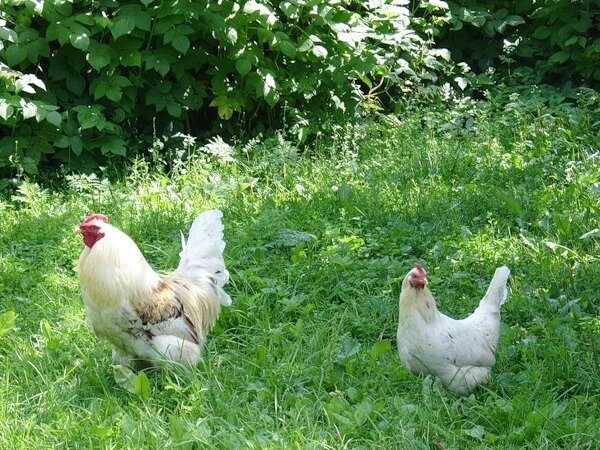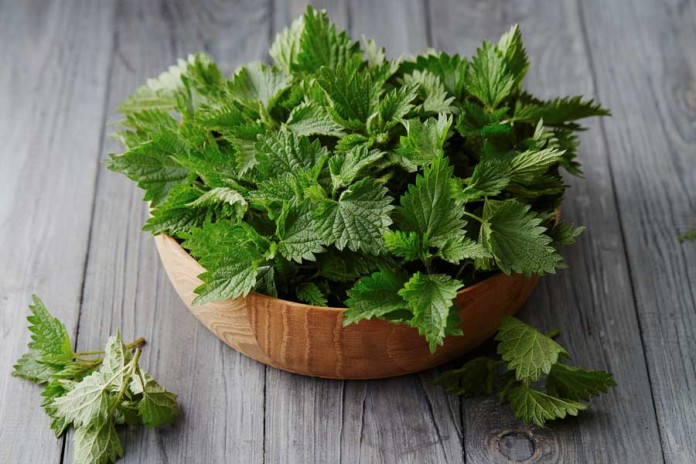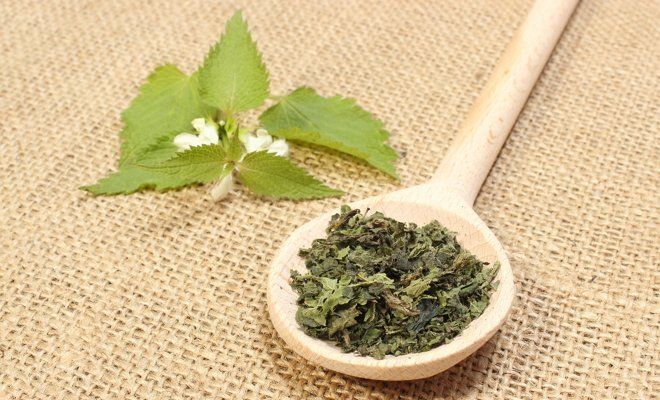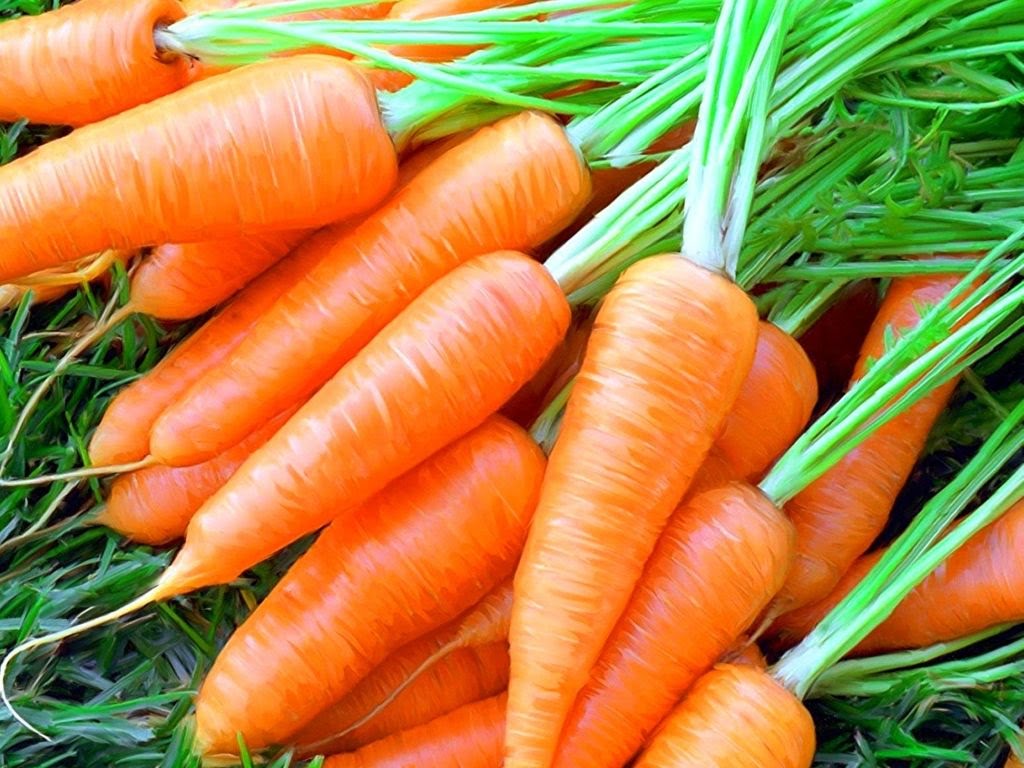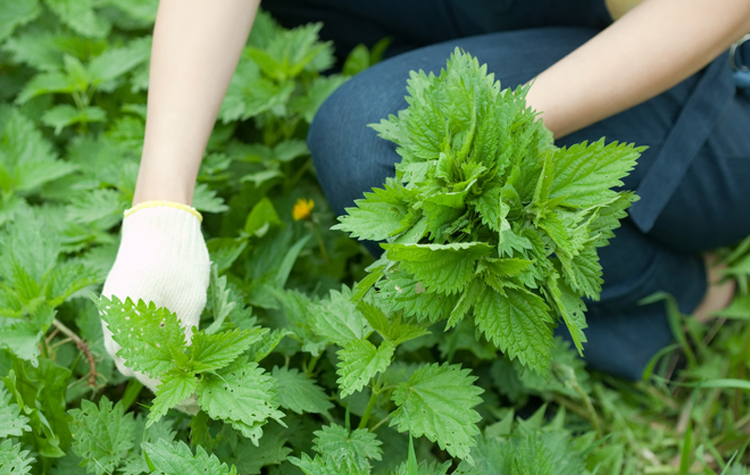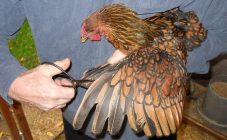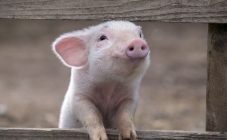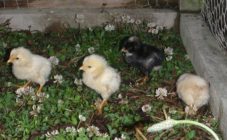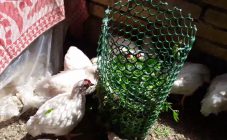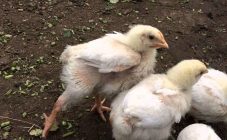Content:
Chickens are not very demanding birds. Each owner is interested in the feathered economy growing healthy and resistant to diseases and climatic changes and does not reduce egg production at any time of the year.
Therefore, in addition to grain crops and a variety of mixed fodders, chickens should have greens in their diet. In the summer, they themselves will find their own foods rich in proteins and vitamins in the ground. In the autumn-winter season, it is necessary to add green mass to the main food.
The most suitable product, saturated not only with vitamins, but also with proteins, carbohydrates and a whole set of macro- and microelements, so necessary for both adult layers and chickens, is common nettle, which grows everywhere. Therefore, in order to provide a balanced diet for feathered pets, it is necessary to timely harvest nettles for the winter for chickens.
Useful properties of nettle
What is the difference between this species and other representatives of the flora? The first thing that distinguishes nettles from the diversity of the plant world is the tremendous benefits for rich, balanced feeding of birds. It contains a lot of minerals, carbohydrates and proteins, which are necessary for both laying hens and chickens. Due to their presence in the plant, adults, and especially young animals, receive energy and gain mass much faster. Calcium, potassium and phosphorus are involved in the formation of eggs and the skeleton of a bird. Iodine and iron strengthen the immune system and promote growth. You can harvest and use the plant all year round for nothing. This opportunity is being successfully used by farmers and rural people who breed birds.
The benefits are invaluable, there is no harm from the use of nettle. In spring and summer, you can feed this herb with fresh herbs in such an amount that the birds are able to eat. There will be no harm from this. In addition, chickens only eat leaves as much as they need. The stalks that remain can then be dried and ground into grass flour.
Feeding chickens with fresh nettles
Nettle is a versatile plant. It can be given to birds fresh, dried, steamed and in granules. This is one of the few herbs that is allowed to feed chickens from birth. Nettle is especially useful for laying hens. The most optimal period of its use is the period from the beginning of growth to the first color. Considering that in rural areas, nettles can be found in the field, and under the fence, and at the edge of the forest, then there are no difficulties in feeding chickens with greens. Therefore, in the spring and summer, farmers most often transfer birds to pasture.
Nettle is especially useful for clungs because when fresh it retains a lot of protein, carotene, fiber, vitamins A, E, B2 and others. Those chickens that receive a sufficient amount of fresh green mass have a high egg production. But if it is not possible to freely graze the herd, then you need to feed the nettles, breaking off and giving leaves. This is not always convenient (after all, the nettle burns), so it is better to tie the branches into bunches and give them in this form. The remaining stems can then be processed (dried, ground into powder, or turned into granules). In winter, they will be of great help in feeding the birds. But the value of dried nettles will decrease slightly compared to fresh herbs.
Rules for feeding chickens with nettles
How to give nettles to chickens, you need to know not only zootechnicians, but also amateur poultry breeders. If in warm weather birds find themselves green chicken feed, then in autumn and especially in winter it is necessary to maintain a balance of the diet, replenish and enrich it with green mass from nettle and other useful herbs.
Should I brew nettles before feeding chickens? This is not worth doing, because after heat treatment, a large amount of important nutrients will be lost. You can't think of a better nettle vitamin cocktail for the feathered kingdom. You need to grind fresh leaves and stems and add the mass to the mash. To preserve a sufficient amount of vitamins and other valuable substances, mix green stuff with warm, not hot foods.
Another important question arises before business executives: "how to properly organize the feeding of poultry in the cold season, so that the chickens do not stop laying?"
In order not to reduce the productivity of layers, you need to switch to a winter diet:
- increase the number of feedings up to three times a day;
- taking into account that in cold weather the body needs twice as much energy for heating and for the formation and production of eggs, evenly distribute food;
- in the morning and at lunchtime give mixed and juicy food, and in the evening - dry;
- provide chickens with warm water (for this you will have to try and change it more than once a day);
- diversify the diet due to green preparations (especially from nettle).
If these recommendations are followed, then experienced layers and pullets will not stop laying eggs in winter.
Harvesting nettles for the winter
Every farmer knows how to prepare nettles for the winter for chickens. The main challenge is not only the quantity of forage, but also the quality. You need to start harvesting nettle long before it blooms. This is necessary so that a greater number of valuable and useful substances are preserved in the product.
There are several ways to prepare dry nettle supplements.
The first is the most common and simplest. In the growing season (before flowering), the nettle is mowed, dried well and ground into a fine powder - grass flour. This additive is of the highest quality, because in the process of natural drying, it loses only 5% of its beneficial properties. Such a product does not lose its value all year round.
For the second method of storing nettles for the winter, a special machine is required - a granulator. The nettles are pre-plucked, dried thoroughly and granules are made on special equipment. In winter, they are added to a mash steamed with broth and fed to chickens. Like nettle flour, the granulated product is also kept dry. If moisture gets on the granules, they can become moldy and deteriorate. Such feed may become unsuitable for birds.
The most proven way to harvest nettles for the winter is to dry the plant bushes tied in bunches of 500 grams. They must be kept suspended in a draft. The place should be darkened, poorly accessible to sunlight. Such sheaves are stored in boxes or bags in a dry ventilated place.
Tips & Tricks
To increase egg production, laying hens should be given, along with nettle leaves, its boiled seeds. This applies not only to chickens of any breed, whether they are meat broilers or Russian crested layers, but also to birds of any breed.
There is one little secret on how to properly feed nettles to laying hens for their best performance.Do not feed chickens with the same complementary food for a long time. It is necessary to periodically alternate nettle with herbs such as dandelion, plantain, celandine, dill or alfalfa. In winter, you can combine a dry herbal supplement with animal products: dairy (reverse, cottage cheese), meat and bone meal, fish products, as well as some root crops. Carrots containing a lot of carotene and vitamin A are especially useful for laying hens. The use of a carrot mixture with dry nettles will increase the egg production of hens, and the yolks of their eggs will be enriched with vitamin A, which is very useful for people.
There is another secret on how to use nettles as complementary food for chickens. In summer, birds do not need to spend a lot of energy to heat. But during this period they move more and rush more actively. This means that their food should be light, consisting mostly of plant foods. Nettle during this period should come first. In winter, when chickens are less mobile, do not get food on their own, their diet should contain more high-calorie foods. And if in the summer season it was necessary to include fresh nettles of 60 g or 20 g of dry flour in the daily menu, then in winter it is halved. Some poultry farmers feed egg-breed chickens with earthworms. This also increases the egg-laying rate.
At home, it is not difficult to grow birds, both meat breeds and layers. The main thing is to follow the rules of feeding, not to exceed or underestimate the required norms and to balance their diet, in accordance with all parameters and factors: breed, age, season, etc. If these requirements and recommendations are followed, poultry farmers can expect positive results from their pets.
